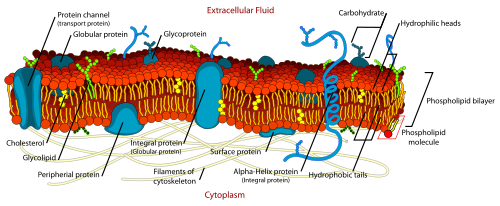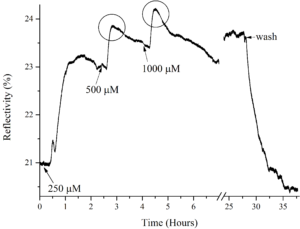By Daniel Suhendro
Decreasing side effects and increasing effectiveness of drugs is one of the motivations behind drug-membrane interaction studies. Many drugs target the inside of the cell or interact with membrane receptors. In order to get inside cells, the drug has to pass through or interact with the cell membrane, and in addition to interacting with a membrane bound protein, drugs can also interact directly with the lipid membrane. The cell membrane is very complex is made out of several different kinds of lipids, proteins and carbohydrates and arranged like a mosaic (Figure 1). The different lipids that constitute the membrane can interact differently and non-specifically with drugs, causing unwanted side effects or the accumulation of the drug within the membrane.

My research has been about the nonspecific interaction of a model drug Chlorpromazine (CPZ), an antipsychotic drug, with a lipid bilayer membrane. This research studied the kinetics of adsorption and desorption of the drug using a model membrane system in order to simplify the complex structure of a natural membrane. Even when using this simplified model membrane, the observed behaviour is more complex than what is predicted by simple models, reflecting the complicated interaction between the drug and the membrane. This is an interesting part of the research that can be pursued further.

Another finding from my research was that the binding of drugs to the model membrane is driven by concentration difference between the drug bound to the membrane and the free drug in the solution, instead of being driven by the availability of binding sites. The accumulation of drugs cannot continue indefinitely though, above a certain concentration the drug binding reached saturation (Figure 2). The saturation of the membrane was indicated by overshoots in the kinetic graph (circled in Figure 2) where the reflectivity showed a fast increase followed by a slower decrease. It is as if the free drug in solution tried to bind to the membrane but was then released again into solution.
What do these results mean for improving current drugs? The nonspecific adsorption of this drug to the membrane is not negligible and can be more complex than assumed. As mentioned earlier, these non-specific interactions can lead to the accumulation of the drug in membranes, as well as a range of side effects. Therefore, more research needs to be done to minimise or eliminate this nonspecific interaction in order to improve drug efficacy.

